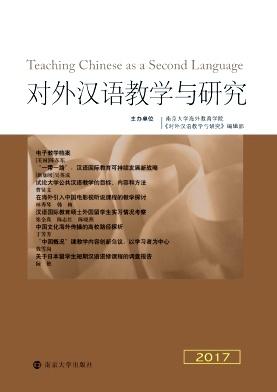Vocabulary Transfer from Reading to Writing: A Comparison of Essay Writing and Synchronous CMC
引用次数: 1
Abstract
Reading-integrated writing is known as an effective approach to teaching and learning vocabulary as it allows students to transfer vocabulary from a source text to writing. This study examines whether vocabulary transfer from an input text to writing varies according to the two types of tasks: essay writing and synchronous text chat. One hundred Korean college students from four “Reading and Writing” classes performed both tasks, and their vocabulary use was compared between the two tasks. The tokens and the types of words used in essay writing and chatting were compared against a base wordlist constructed from the input text, and their lexical profiles were analyzed using various programs, such as RANGE, VocabProfile, and WordSmith. The findings show that more varied words were transferred from the source text to the chat scripts than to the essays. While the lexical diversity was slightly greater in the chat scripts than in the essays, the difference was not statistically significant. Interestingly, the chat scripts exhibited the same level of lexical density (i.e., the ratio of content words to function words) as the essays. It can be inferred from the findings that the synchronous chat provides a valuable context for practicing target language, and that it is as useful as essay writing for promoting vocabulary transfer from reading to output production. In addition, the findings suggest that reading can become a beneficial source of language input that leads to output production.从阅读到写作的词汇迁移:论文写作与同步CMC的比较
阅读整合写作被认为是一种有效的教学和学习词汇的方法,因为它允许学生将词汇从源文本转移到写作中。本研究考察了从输入文本到写作的词汇转移是否根据两种类型的任务而变化:论文写作和同步文字聊天。来自四个“阅读和写作”班的100名韩国大学生同时完成了两项任务,并比较了他们在两项任务中的词汇使用情况。论文写作和聊天中使用的标记和单词类型与从输入文本构建的基本单词列表进行比较,并使用各种程序(如RANGE、VocabProfile和WordSmith)分析它们的词汇概况。研究结果表明,从源文本转移到聊天脚本中的词汇比转移到文章中的词汇更多。虽然聊天脚本中的词汇多样性略高于散文,但差异在统计上并不显著。有趣的是,聊天脚本显示出与文章相同的词汇密度(即内容词与功能词的比例)。从研究结果可以推断,同步聊天为练习目标语言提供了一个有价值的环境,并且它与论文写作一样有助于促进词汇从阅读到输出的转移。此外,研究结果表明,阅读可以成为一种有益的语言输入来源,从而产生输出。
本文章由计算机程序翻译,如有差异,请以英文原文为准。
求助全文
约1分钟内获得全文
求助全文

 求助内容:
求助内容: 应助结果提醒方式:
应助结果提醒方式:


